Financing the public debt and implementing a stable currency system were among the many challenges facing the government of the Republic of Texas. Although the Constitution of 1836 gave Congress the power to “coin money [and] regulate the value thereof,” no coins were ever minted.
Initially, the chief means of bartering for goods were the use of other goods, as well as scarce amounts of coin and currency issued in the United States. In addition, “skinplasters”–notes generally found in denominations of less than one dollar–were issued in Texas by private firms and municipalities.
By the fall of 1837, the new Republic printed its first promissory notes. These were sometimes referred to as Interest Notes because they were payable with ten percent interest one year from the date of issue (see samples below). The notes were issued in denominations of $1, $2, $3, $5, $10, $20, $50, $100, and $500. They had blank backs. A total of almost $1.2 million in these notes were issued between late 1837 and early 1839. Rather than appreciating at a ten percent annual rate, however, the notes decreased in value–to less than 50 cents on the dollar by January of 1839.
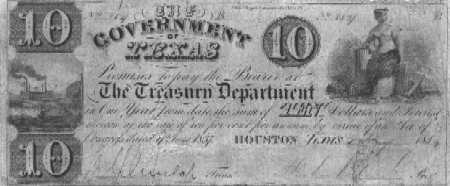
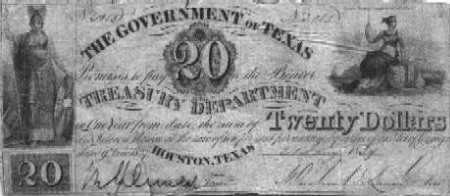
1837 and January 1839. They rapidly devalued to 1/2 of their original worth.
This system was replaced in early 1839 by non-interest bearing notes referred to as “redbacks” due to the reddish color on their reverse side (see samples below). Printed in roughly the same denominations as the interest-bearing notes, about $2.8 million in redbacks were issued between January 1839 and September 1840. However, a few replacement bills were printed after that time.
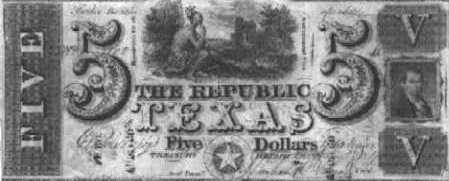
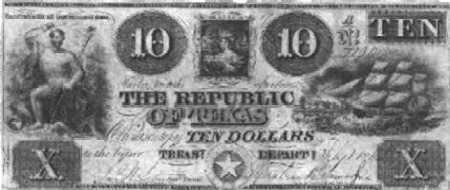
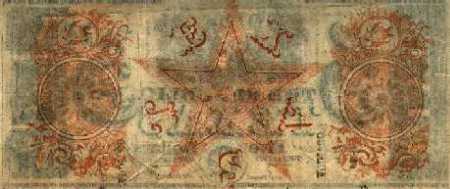
were first issued in early 1839.
Like the interest-bearing notes before them, the redbacks collapsed in value almost from the start. By 1842, the currency system of the Republic of Texas was in such dire straits that even the government would not accept redbacks for payment of taxes. Other plans were attempted to get the republic’s fiscal house in order, but these plans achieved only slightly better results. However, as the economy in the United States improved and the Texas annexation movement gained momentum, currency in Texas slowly recovered some of its value before Texas was annexed in 1845.
Reference:
Walter Prescott Webb (Editor), The Handbook of Texas, Texas State Historical Association, Austin, 1952; Sample notes are from the editor’s collection.